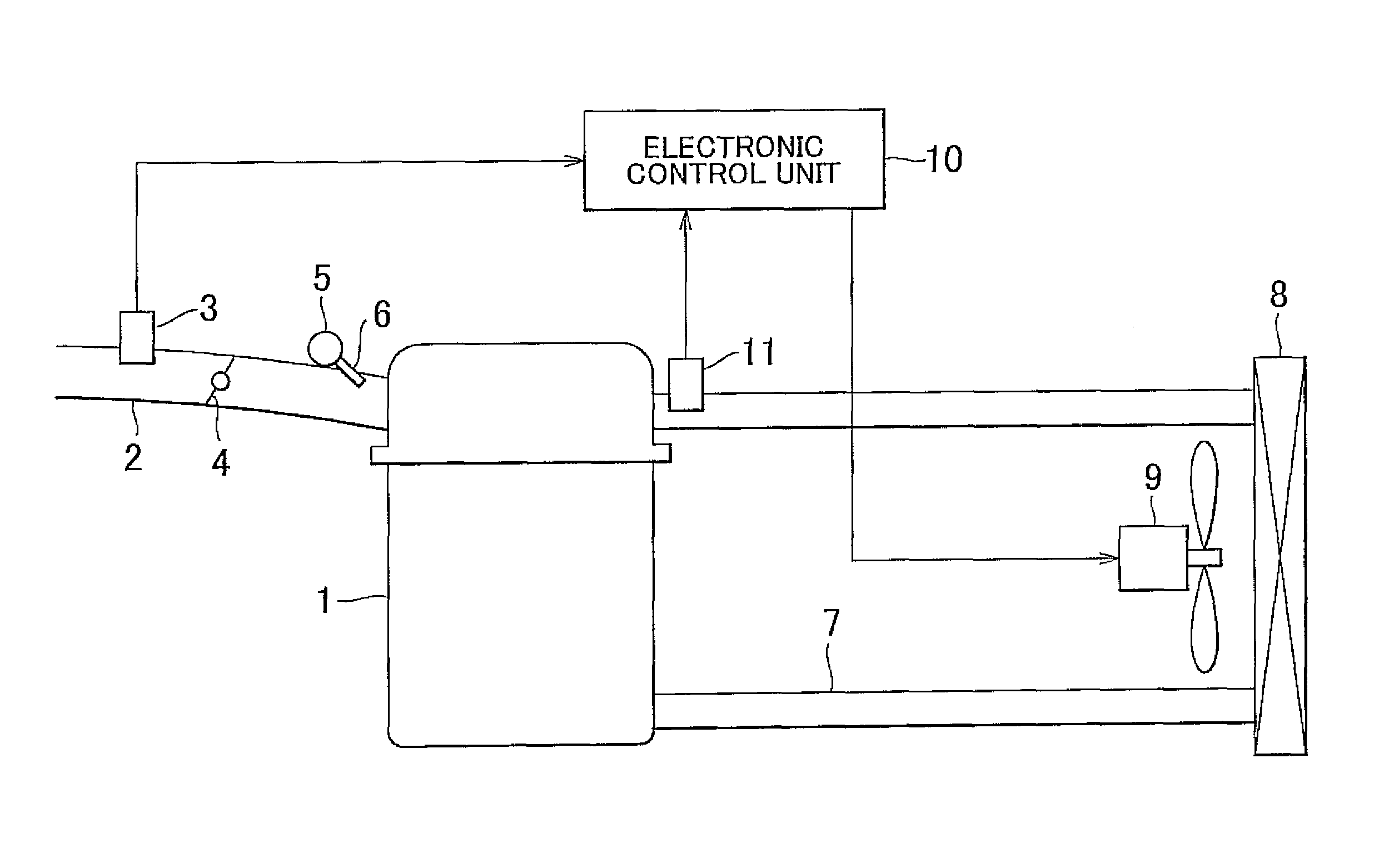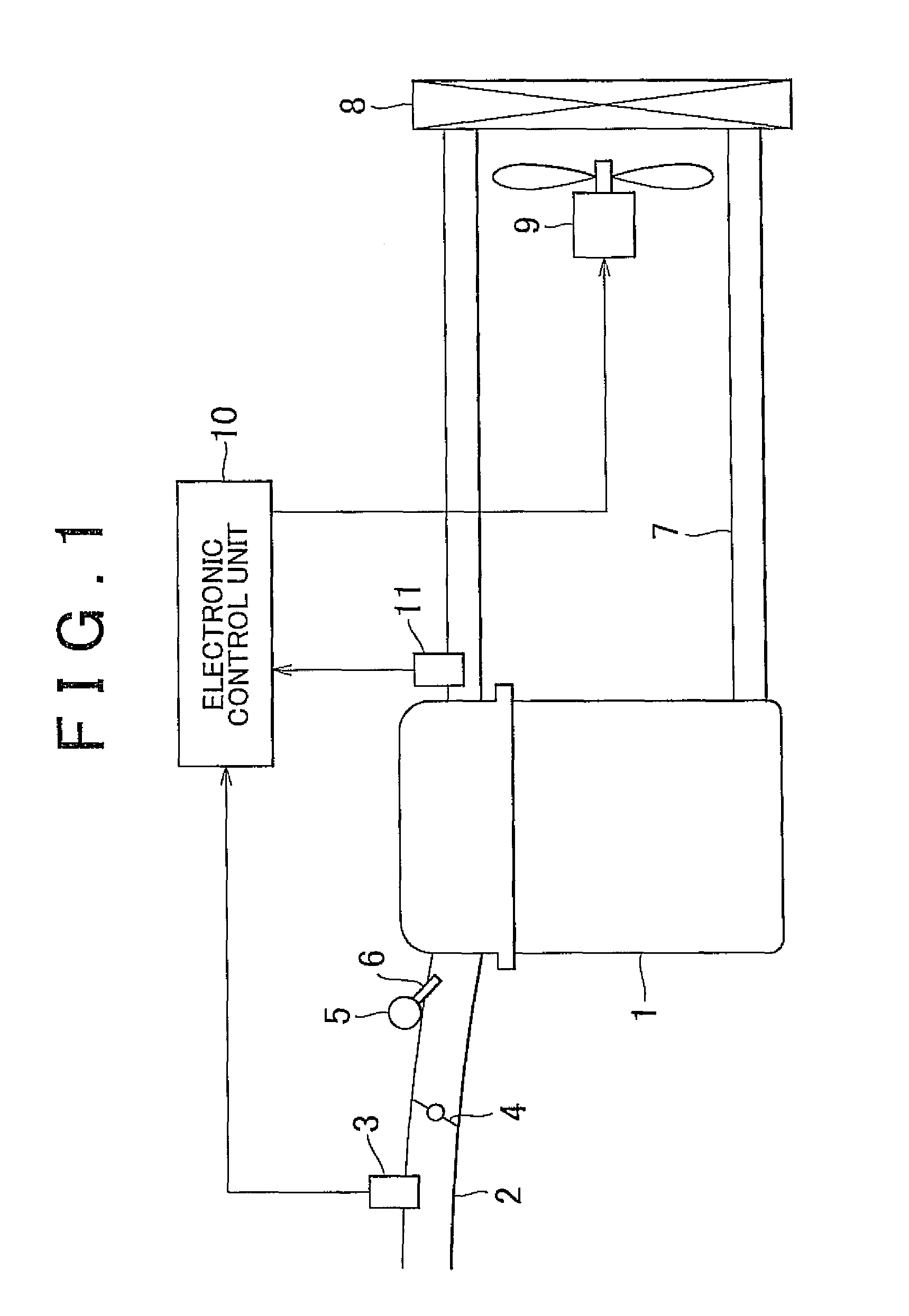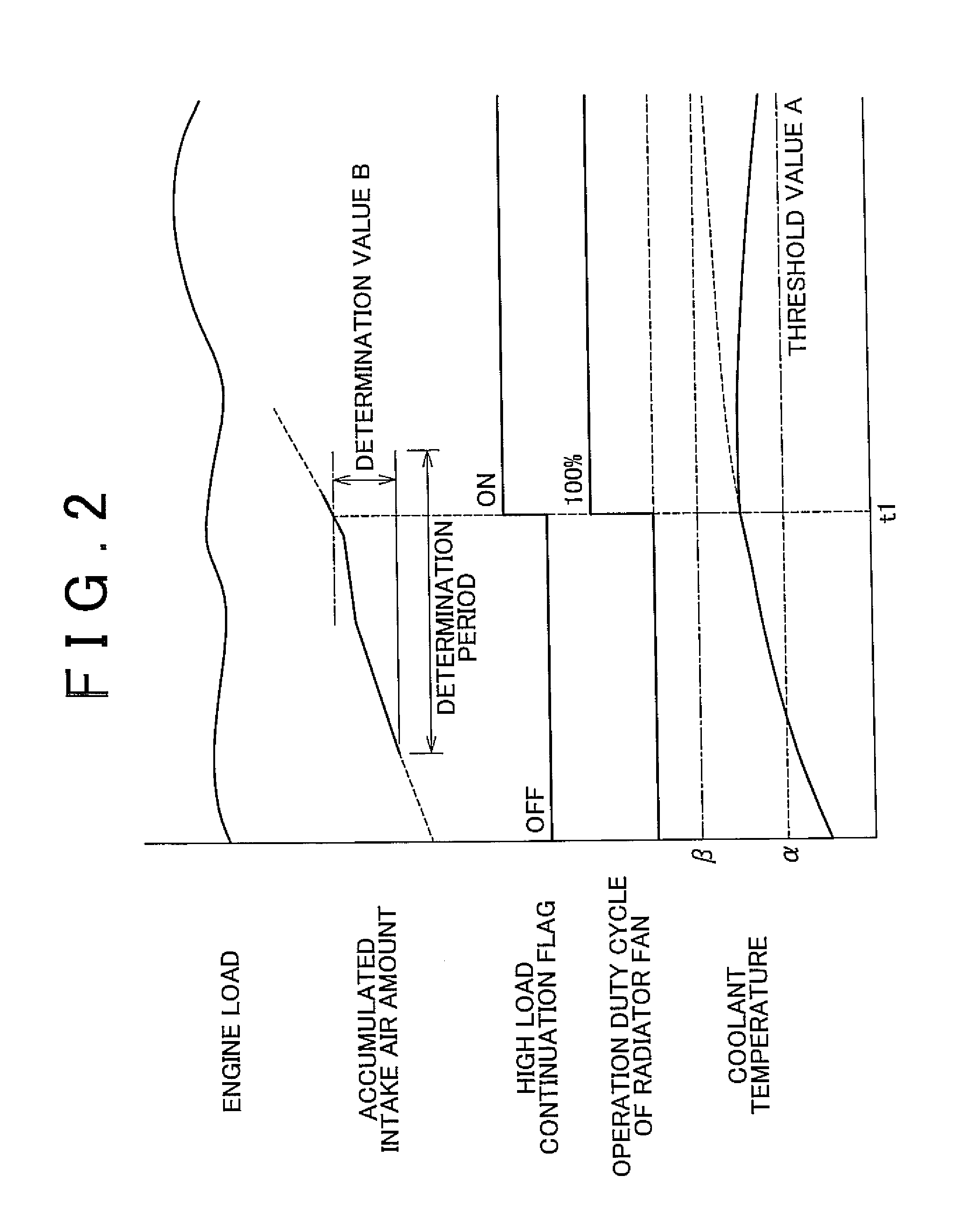Cooling apparatus for water-cooled engine and method of controlling cooling apparatus for water-cooled engine
a technology of water-cooled engines and cooling apparatuses, which is applied in the direction of machines/engines, process and machine control, instruments, etc., can solve the problems of affecting so as to improve the startability of the engine
- Summary
- Abstract
- Description
- Claims
- Application Information
AI Technical Summary
Benefits of technology
Problems solved by technology
Method used
Image
Examples
Embodiment Construction
[0026]Hereinafter, a cooling apparatus for a water-cooled engine according to an embodiment of the invention will be described in detail with reference to FIG. 1 to FIG. 3. FIG. 1 shows the configuration of the entire cooling apparatus for a water-cooled engine according to the embodiment. As shown in FIG. 1, in an intake passage 2 of a water-cooled engine 1 to which the cooling apparatus according to the embodiment is applied, an airflow meter 3, a throttle valve 4, and an injector 6 are provided. The airflow meter 3 detects an intake air amount. The throttle valve 4 adjusts the intake air amount. The injector 6 injects fuel accumulated in a delivery pipe 5, into intake air. The water-cooled engine 1 is connected to a coolant circulation passage 7. Coolant, which has passed through a water jacket formed in the water-cooled engine 1, is circulated through the coolant circulation passage 7. The coolant circulation passage 7 is provided with a radiator 8 in which the coolant is cooled...
PUM
 Login to View More
Login to View More Abstract
Description
Claims
Application Information
 Login to View More
Login to View More - R&D
- Intellectual Property
- Life Sciences
- Materials
- Tech Scout
- Unparalleled Data Quality
- Higher Quality Content
- 60% Fewer Hallucinations
Browse by: Latest US Patents, China's latest patents, Technical Efficacy Thesaurus, Application Domain, Technology Topic, Popular Technical Reports.
© 2025 PatSnap. All rights reserved.Legal|Privacy policy|Modern Slavery Act Transparency Statement|Sitemap|About US| Contact US: help@patsnap.com



